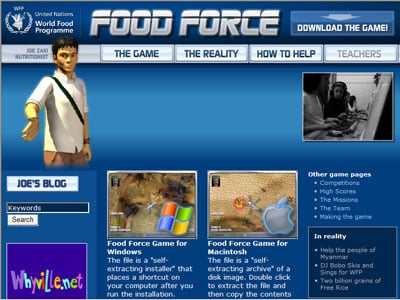NGO Action Against Hunger France’s (ACF) most generous individual donors are 65-70, according to Nicolas Trombert, acting head of donor relations at the Paris headquarters; British Red Cross supporters fall into a similar bracket; while Save the Children’s are over 50, said Jeremie Bodin, head of emergency fundraising for the NGO.
Older givers are vital to keeping organizations going, and are often more in tune with humanitarian realities, said Médecins sans Frontières (MSF) UK fundraising head, James Kliffen. “Many of our oldest [UK] supporters have experienced war first-hand… There is much less effort required to explain what we do,” he told IRIN.
Nonetheless, there is no denying youths are the givers of tomorrow. Bodin told IRIN: “We’re trying to attract younger givers - young professionals in the 25-30 age range - they’re working and often don’t have kids yet; and we’d like to go even younger, so that when people are ready to make a donation, they’ll think of Save the Children.”
| Some humanitarian games | |
| Against All Odds, aimed at 12-15 year-olds, takes players through 12 stages of a refugee experience, from persecution to seeking asylum. | |
| In Youth and GameLab creation Ayiti: The Cost of Life, players must keep a Haitian family of five alive, healthy, and educated. | |
| Hurricane Katrina: Tempest in Crescent City, follows local heroes in the Katrina disaster, to impart disaster preparedness lessons. | |
| Third World Farmer lets players manage a small virtual farm in a developing country. | |
| A Red Cross game takes the player through simulated training and emergency field operations. | |
| Wildfire By Implication recently won in the Game Design Category of the Microsoft-sponsored global student contest Imagine Cup. They designed a game inspired by the volunteerism Filipinos showed after Typhoon Ondoy flooded Manila in 2009. | |
| New York Times columnist Nicholas Kristof is developing an online game alongside 54 NGOs, based on the success of his book Half the Sky, on women’s oppression.The project will also include a mobile phone application, TV show and online documentary. | |
Gigs, twitter, YouTube
Aid agencies IRIN spoke to - the World Food Programme (WFP), Save the Children, ACF, Oxfam and MSF-UK - mentioned some traditional methods of reaching out to children and youths: talking at schools; developing learning tools for teachers; setting up university “student societies”; disseminating messages at music festivals; street marketing; and running events, among many others.
Events range from student gigs to the more gruelling: ACF’s UK chapter is currently organizing a “twin peaks” challenge in November, where fundraisers are sponsored to run up 67 floors of two buildings in London.
As the online world expands, all said they are using social networking tools Facebook, Twitter and YouTube to get a younger audience involved in humanitarian issues. “We have to use the tools they do, to communicate,” said Bodin.
Online games can reach millions in one fell swoop: Indian e-learning company ZMQ created simple social impact mobile phone games on themes like HIV/AIDS and the impact of climate change, sending them out to 64 million people, said Asi Burak, co-president of the NGO Games for Change, which brings together people from government, philanthropy, civil society, academia, and the game industry to explore how digital games can catalyse social change.
Gaming
Through “serious games”, aid agencies can raise awareness of humanitarian and development issues; build constituencies; and raise money, said Burak, but they work best when this objective is clearly spelt out in the design stage. Identifying the specific audience within the narrowest possible age range; and spelling out the context, are also key, he said.
Users learn through role-play and by confronting the consequences of their actions, said Burak. In Darfur is Dying, users choose a member of a Darfurian family and have them complete tasks, such as fetching water, without being killed or kidnapped by militia. The online Flash game has been played millions of times since its 2006 release.
|
Photo: WFP  |
| A screenshot of the game in progress |
The organization is now teaming up with gaming company Zynga - creator of Facebook’s Farmville - to try to raise money for its global school-feeding programmes. Gamers - there are a potential 215 million of them, according to WFP - will click on a “We Feedback” icon to find out how many WFP school meals the value of their favourite menu item - say a chicken Caesar salad - would buy; and then choose to donate or not.
Zynga already helped WFP raise US$1.5 million following the Haiti earthquake, by getting players of Fishville, YoVille, FarmVille and Café World to buy WFP-themed items.
“Games aren’t the right tool for everything,” said Burak. “They don’t need to replace other media, but should complement it... Like everything, they are a great tool if used correctly.”
Some fear a game is the wrong medium to transmit complex messages such as abduction, conflict, or the refugee experience, but Burak said they can be more effective. He cites Peacemaker, which he designed to raise awareness of the Israel-Palestine conflict. “Gamers take the role of a leader, and then have to negotiate with eight different groups... Users said it helped them understand the complexity of the situation much better than the isolated events they hear about in the news.”
aj/bp/cb
This article was produced by IRIN News while it was part of the United Nations Office for the Coordination of Humanitarian Affairs. Please send queries on copyright or liability to the UN. For more information: https://shop.un.org/rights-permissions





